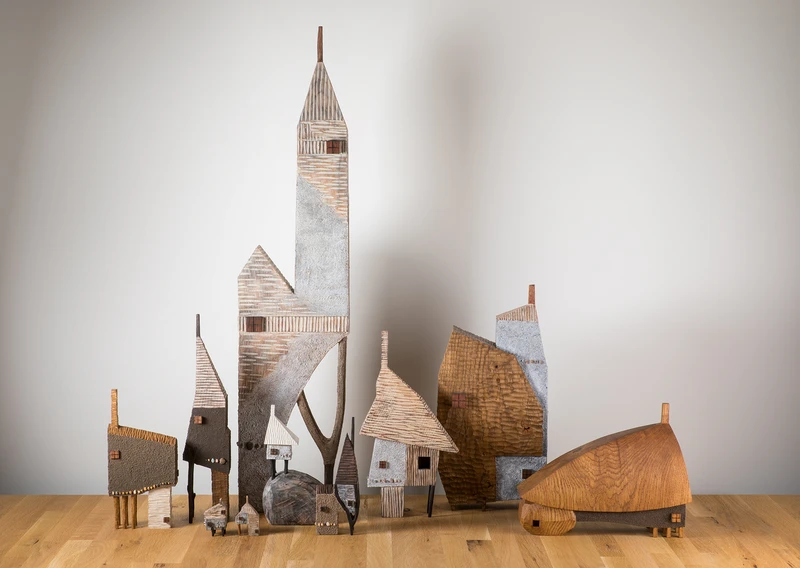Yukihiro Akama: Basho no Kankaku – A Sense of Place
9 Mar-30 Jun 2024


A display of 55 works, Basho no Kankaku – A Sense of Place is Akama’s largest exhibition to date.
It will showcase a new collection of beautiful, intricately carved wooden houses of various sizes – from just 4cm (slightly bigger than a 50p piece) up to 106cm – alongside a series of architectural technical drawings and mini prints. All works will be for sale, with prices ranging from £135 to £9,500.
Working from a furniture maker’s workshop in Huddersfield, Akama is surrounded by the natural world. There, he creates these singular houses, carving each one from a single piece of wood. He draws on his experience as a joiner, through which he has refined his skills and techniques in woodworking. Each piece is given a unique appearance and takes between three hours and three days to complete. For this latest collection, commissioned by YSP, Akama has developed a method of colouring the wood using iron acetate solution. The solution is painted onto the wood which reacts with the tannins to create a beautiful ebonised finish.
The wood often dictates the starting point for the designs, with the knots or grain guiding where he cuts and carves. Gradually they take on the appearance of a house – often low and long, or tall with stilt-like legs and large roofs, sometimes cantilevered out. Delicate and intricate detailing of clay render and pebbles minimally decorate and enhance the surfaces, adding to the overall effect of how precarious man-made structures can be and the now transient and perilous nature of so many people’s lives. Inspiration comes from many sources for these fantastic creations, but much comes from Japanese temples and shrines and particularly from Jomon-era ruins: the shapes, textures and surfaces used in this period of 4,000 years ago.
Akama is an architectural technician by training, having studied architecture at Tohoku University of Art and Design, in Yamagata, Japan. When living in Japan, Akama designed a house for a plot of land he owned, rich in native Japanese trees with wild fruits and mushrooms. He aims to capture a sense of place in his work, creating houses that belong in woodland forest settings – quiet and rural. In 2011, he and his family moved to the UK, drawn to Yorkshire due to its landscape and natural surroundings.